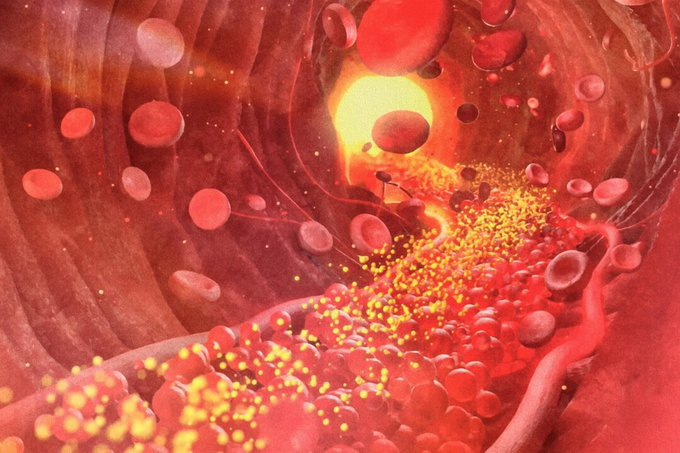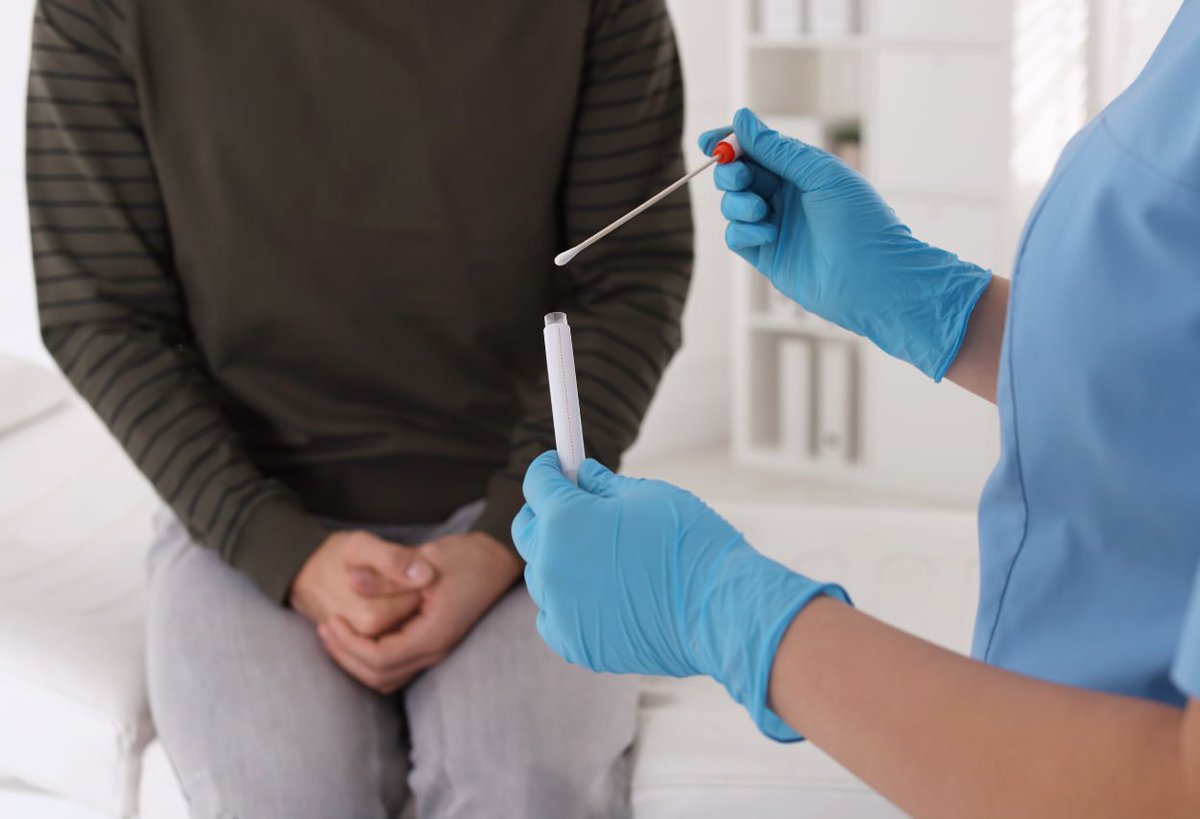Your brain keeps growing long after childhood.
Scientists found newborn neurons in 78-year-old brains, shattering the myth that growth stops.
This could transform how we treat Alzheimer’s and age-related decline.
But why do some keep this power while others lose it?
🧵 THREAD
Scientists found newborn neurons in 78-year-old brains, shattering the myth that growth stops.
This could transform how we treat Alzheimer’s and age-related decline.
But why do some keep this power while others lose it?
🧵 THREAD

Even after death, the brain of a 78-year-old held a surprise—researchers found clusters of immature brain cells, suggesting the human brain may keep making new neurons long after childhood.
The discovery, made this month by researchers at Sweden’s Karolinska Institute, provides the clearest proof yet that our brains don’t stop growing by adulthood, but continue to make new brain cells throughout life.
The discovery, made this month by researchers at Sweden’s Karolinska Institute, provides the clearest proof yet that our brains don’t stop growing by adulthood, but continue to make new brain cells throughout life.

Scientists found rare neural progenitor cells in the hippocampus of adult human brains.
The hippocampus, a seahorse-shaped structure located deep in the brain, is the brain’s memory center, responsible for storing and forming memories.
“We have now been able to identify these cells of origin, which confirms that there is an ongoing formation of neurons in the hippocampus of the adult brain,” Jonas Frisen, lead researcher and professor of stem cell research at the institute, said in a statement.
The hippocampus, a seahorse-shaped structure located deep in the brain, is the brain’s memory center, responsible for storing and forming memories.
“We have now been able to identify these cells of origin, which confirms that there is an ongoing formation of neurons in the hippocampus of the adult brain,” Jonas Frisen, lead researcher and professor of stem cell research at the institute, said in a statement.

“Adult neurogenesis offers a glimmer of hope for brain repair,” co-researcher Marta Paterlini told The Epoch Times.
It could help pave the way for therapies to treat depression, Alzheimer’s disease, and age-related cognitive decline, she added.
theepochtimes.com/health/scienti…
It could help pave the way for therapies to treat depression, Alzheimer’s disease, and age-related cognitive decline, she added.
theepochtimes.com/health/scienti…
Inside the Brain’s Hidden Workshop
The team analyzed post-mortem brain tissue from 36 donors ranging in age from infancy to 78 years.
They identified three key types of neural progenitor cells by analyzing the cells’ gene activity.
These cells had genes active in cell division and early-stage neuron development—hallmarks of neurogenesis.
The team analyzed post-mortem brain tissue from 36 donors ranging in age from infancy to 78 years.
They identified three key types of neural progenitor cells by analyzing the cells’ gene activity.
These cells had genes active in cell division and early-stage neuron development—hallmarks of neurogenesis.

A little about us: We’re a team of journalists and researchers on a mission to give you REAL and honest information about your health.
Side effects of reading our posts may include: critical thinking.
Follow us for more daily threads—backed by hard data.
—> @EpochHealth
Side effects of reading our posts may include: critical thinking.
Follow us for more daily threads—backed by hard data.
—> @EpochHealth

According to Paterlini, the cells showed gene activity associated with cell division and early-stage neuron development—hallmarks of neurogenesis—and were found clustered near mature neurons in the dentate gyrus, together providing strong evidence that new brain cells continue to form in adulthood.
The researchers focused on the dentate gyrus within the hippocampus, as this structure has long been suspected of supporting neurogenesis in animals.
Often described as the brain’s “memory gate,” the dentate gyrus helps us distinguish between similar experiences and form distinct memories.
The researchers focused on the dentate gyrus within the hippocampus, as this structure has long been suspected of supporting neurogenesis in animals.
Often described as the brain’s “memory gate,” the dentate gyrus helps us distinguish between similar experiences and form distinct memories.

Previous studies had identified immature neurons in adults, but it was unclear whether those cells were newly formed or had simply remained immature because they took too long to mature.
While progenitor cells were most abundant in children, they remained detectable in adult brains, though more sparsely.
However, the study also revealed significant individual variation. Some donors had many new cells, others had few or none. The researchers noted this variation could be influenced by factors such as genetics, stress, mental health, or lifestyle.
While progenitor cells were most abundant in children, they remained detectable in adult brains, though more sparsely.
However, the study also revealed significant individual variation. Some donors had many new cells, others had few or none. The researchers noted this variation could be influenced by factors such as genetics, stress, mental health, or lifestyle.

Why a Few Cells Still Matter
Even a few new cells can be enough to make a difference.
In the dentate gyrus, most mature neurons are fixed to their existing connections and only activate in response to the strongest signals.
New neurons, however, are more flexible—able to form new connections and highly adaptable.
“Even if they are few, they’re always responding to input,” Ionut Dumitru, co-researcher of the study, told The Epoch Times. “That makes them matter for the functioning of the hippocampus.”
Even a few new cells can be enough to make a difference.
In the dentate gyrus, most mature neurons are fixed to their existing connections and only activate in response to the strongest signals.
New neurons, however, are more flexible—able to form new connections and highly adaptable.
“Even if they are few, they’re always responding to input,” Ionut Dumitru, co-researcher of the study, told The Epoch Times. “That makes them matter for the functioning of the hippocampus.”

Plasticity makes new neurons particularly valuable for making new memories and learning new skills—abilities that often decline with age or disease.
More neurogenesis isn’t always a sign of better brain health, however.
In one case, a donor with an unusually high number of new cells was later found to have epilepsy, a condition previously linked to increased neurogenesis. Still, Dumitru said that such associations remain anecdotal.
“We saw that there’s variability,” Dumitru said. “We also know from other studies that in some people, neurogenesis just seems to be more active than in others.”
“This wasn’t designed to measure the amount of neurogenesis in different people,” he said. “What we showed is that these cells are there. But for how many and why—it’s going to take more quantitative studies to answer that.”
More neurogenesis isn’t always a sign of better brain health, however.
In one case, a donor with an unusually high number of new cells was later found to have epilepsy, a condition previously linked to increased neurogenesis. Still, Dumitru said that such associations remain anecdotal.
“We saw that there’s variability,” Dumitru said. “We also know from other studies that in some people, neurogenesis just seems to be more active than in others.”
“This wasn’t designed to measure the amount of neurogenesis in different people,” he said. “What we showed is that these cells are there. But for how many and why—it’s going to take more quantitative studies to answer that.”

Treatment and Future Implications
Understanding how these cells develop could someday lead to therapies that heal brain injury, neurodegeneration, or psychiatric illness through new brain cell growth.
Current treatments, which tend to manage symptoms or slow progression, don’t replace the neurons that have been lost.
“Learning the mechanism behind how these stem cells divide and integrate gives us a starting point,” Dumitru said. “That means we could try to harness it in therapies where neurons are lost and can’t be replaced.”
Understanding how these cells develop could someday lead to therapies that heal brain injury, neurodegeneration, or psychiatric illness through new brain cell growth.
Current treatments, which tend to manage symptoms or slow progression, don’t replace the neurons that have been lost.
“Learning the mechanism behind how these stem cells divide and integrate gives us a starting point,” Dumitru said. “That means we could try to harness it in therapies where neurons are lost and can’t be replaced.”

Unlike other mammals, adult human progenitor cells express a handful of unique genes not found in animals.
Researchers say that these genetic distinctions could be why certain brain diseases manifest differently in humans compared to animals, and underscore the importance of studying human neurogenesis directly to develop targeted, effective treatments.
Researchers say that these genetic distinctions could be why certain brain diseases manifest differently in humans compared to animals, and underscore the importance of studying human neurogenesis directly to develop targeted, effective treatments.

The findings also shift the way we think about the adult brain—not as a static organ, but as ever-growing and changing.
Neuroscientists have long known that the brain is neuroplastic—meaning that it can adapt by forming new connections throughout life, especially when learning new things.
This flexibility supports the relearning of lost skills from brain injuries and emotional traumas.
Neuroscientists have long known that the brain is neuroplastic—meaning that it can adapt by forming new connections throughout life, especially when learning new things.
This flexibility supports the relearning of lost skills from brain injuries and emotional traumas.

The research does not show if there are ways to boost neurogenesis by oneself, though Dumitru pointed to studies in animals showing that exercise, sleep, and reducing stress may help preserve brain health and support neurogenesis.
“Exercise also influences cerebral blood flow, blood-brain barrier permeability, and the expression of neurotrophic factors, all of which contribute to neurogenesis and cognitive improvements,” Paterlini said.
“Exercise also influences cerebral blood flow, blood-brain barrier permeability, and the expression of neurotrophic factors, all of which contribute to neurogenesis and cognitive improvements,” Paterlini said.

For now, the message is both scientific and hopeful: Your brain isn’t done growing. The way we live, learn, and care for it may matter more than we once thought. 

Thanks for reading! If you found this valuable, here's a special deal:
Unlock our ENTIRE library of @EpochHealth articles for just $1/week—plus unlimited access to everything else on our site.
Claim it here: subscribe.theepochtimes.com/p/?page=digita…
Unlock our ENTIRE library of @EpochHealth articles for just $1/week—plus unlimited access to everything else on our site.
Claim it here: subscribe.theepochtimes.com/p/?page=digita…

• • •
Missing some Tweet in this thread? You can try to
force a refresh





















